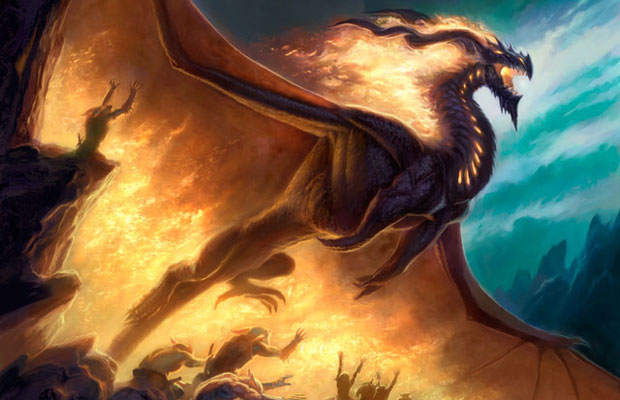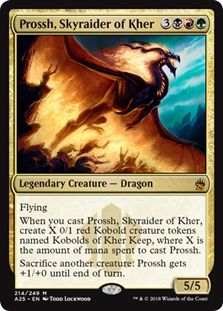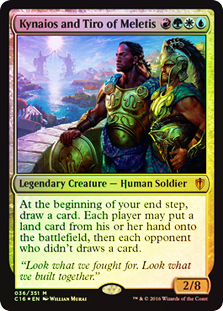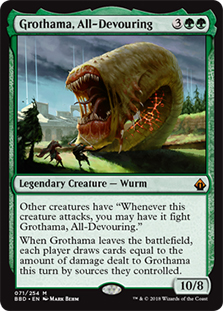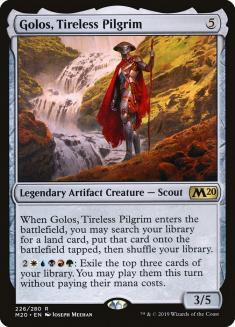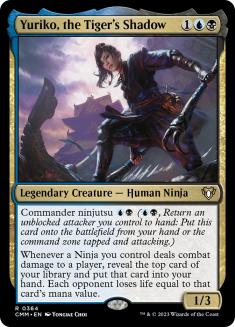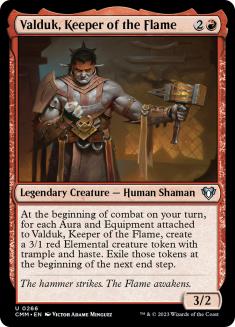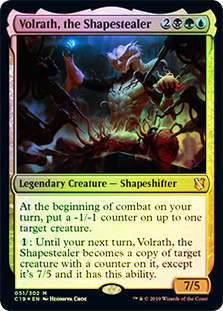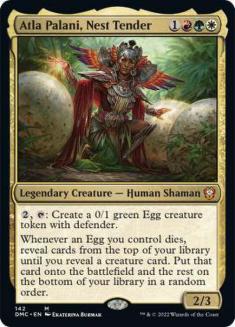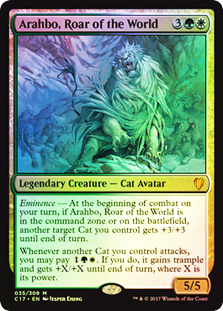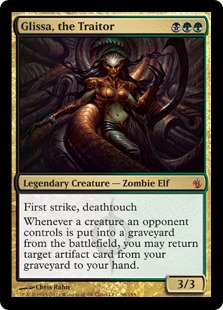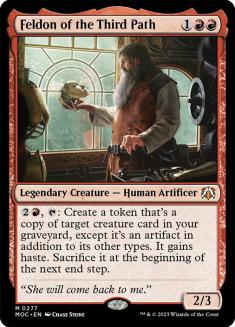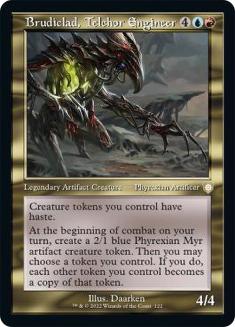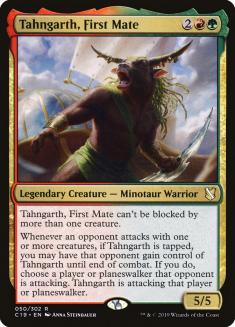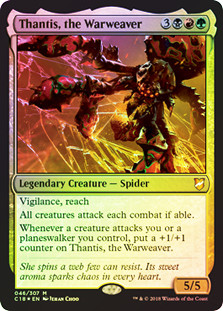At the recent MagicFest in Reno, Channelfireball announced a linear metric called How to Rate Your Commander Deck:
1-2: For the Fun of It
More interested in a theme than efficiency or winning, just looking for everyone at the table to have fun!
3-4: Casual
Trying to win but with limited resources (example: recent pre-cons).
5-6: Focused
Powerful card interactions, but few or no infinite/game-ending combos.
7-8: Optimized
Lots of infinite/game-ending combos and many powerful cards, but some of the cards are not from the highest tier of Commander cards.
9-10: Competitive
Decks pushed to the absolute limit, only the highest tier of commanders/cards are used.
This list grew out of discussion in the Commander Magic community for quite some time now, trying to help players find games of Commander with like-minded players. An unofficial “Rule 0” has been encouraged where each player that sits down for a game of Commander, particularly with people they don’t play with regularly, should discuss the sort of game they want to play. Ideally, everyone comes to an agreement, shuffles up, and has a grand time.
The problem of course is that there hasn’t been any sort of formalized metric for having this conversation in a way that everyone agrees with. One method that popped up early on in these discussions was “power level,” typically on a scale from 1-10. 1 would represent very casual, low-powered decks, and 10 would be high powered, competitive Commander decks you’d play in pods with prizes on the line. The problem with defining Commander games in terms of power level is that it didn’t really capture the intent of the player—plenty of people have powerful cards in their deck but they aren’t looking to win as quickly as possible and prefer a more laid-back, interactive game. On the other side of the coin, there are people who have lower-power decks but do their best to leverage whatever advantages they can press to try to win the game. There’s also the matter of context—what some players consider high-powered cards, other players consider to be staples that you just need to run your deck normally.
What happened many times was that people would come together and claim that their deck was “6-7” and then by the time the game was done some of their opponents might end up mad because they would consider that deck “8-9” in power. It was squishy and subjective and not at all that helpful.
Personally, when I would have the Rule 0 conversation, I’d ask the question, “How quickly and consistently does your deck win?” I’d then go on to explain that I was looking for the sort of game where everyone had a chance to let their deck do its thing, and that we’d all have a good time playing Magic and wrap it up within the hour. Of course, letting each person’s deck “do its thing” and everyone having “a good time playing Magic” is pretty squishy and subjective too, but for me the issue of time was something that we could quantify, and my hunch was developing some sort of two-dimensional grid would be a better way to find the sort of games you wanted to play.
The ChannelFireball 1-10 scale was a step in the right dimension, with descriptors that do a better job of conveying intent. But I also felt like it had similar issues to the power level scale, and that most people would end up in that squishy 6-7 area.
Then I saw that a friend of mine, old-school SCG contributor Anthony Alongi, along with a few others on Twitter, developed a 2×2 grid they called a “CARS Quadrant Model.”
Here’s how they described it:
A CARS Quadrant Model
Imagine an event organizer splits a large (50+) group of Commander players into four areas. Players self-select each game into their most compatible area by answering two questions:
- “How much do I want to win?”
- “How good is the deck I’m using?”
Base on your answers (which can change each game), you are likely to fit best into one of these quadrants:
COMPETITIVE (robust, intense): your deck is built to win at any cost, and everyone knows and expects it.
ASPIRATIONAL (irregular, intense): you’re trying out a new, quirky idea and going hard at the prize.
RECREATIONAL (irregular, relaxed): you’re engaging on a purely social basis, with winning an afterthought.
SELF-RESTRAINED (robust, relaxed): your deck is strong, but there’s no rush to win this particular game.

Q. What about “middle cases?” This chart should have three or more rows, columns, etc.
A. This model presents two spectra – intent (player wants to win) and capacity (deck built to win). You could have as many points on either as you wish, and a correspondingly higher number of cells. In a practical sense, four is sufficient for most events and conversations.
Q. What if I think my deck is bad/good and other people think my deck is good/bad?
A. Listen to other people. They best represent the shared experience you’re about to enter. If you intentionally misrepresent deck capacity or intent, you are violating Rule Zero.
Q. What if someone else misrepresents their capacity or intent?
A. No model can stop this behavior. Only we can, collectively. As you discuss the next game, re-introduce the concept of Rule Zero. If they argue, start that game without them.
Developing model as of March 2020. Developed by Anthony Alongi @elderdragonstat and refined by many excellent people in the Magic community (special thanks to @ursabearwalker, @cryogen_mtg, and @allhailbolas). Constructive feedback welcome @elderdragonstat.
I really liked what Anthony and the others cooked up here. While it didn’t include a time factor, I like how answering the two questions did a pretty good job of defining the sort of games people wanted to play. It basically included the power level scale on one axis, but just a binary choice: is the deck “built to win” and robust? Or is it “um, built” and irregular? And on the other axis was the binary choice on how much you value winning.
I immediately thought about each of my Commander decks and considered where to place them on this quadrant. Here’s where they ended up:
Competitive:
Aspirational:
(none)
Self-Restrained:
Recreational:
I realized when placing the decks in the quadrants that my goal is to pretty much always play in the Self-Restrained zone. I like playing big, powerful spells that can help me win, but not be in any particular hurry to win. But then I realized that some of my decks fell short on the power scale and ended up falling into the Recreational quadrant. The decks have some powerful cards and are fun to play, but they don’t seem to have all the tools they need to close out a game very often.
Then there was my Prossh, Skyraider of Kher deck. I’ve had a Prossh deck for seven years, and it’s one of my favorites. The thing I love most about it is that, while everyone gets anxious about Prossh, most of the time I close out games with a horde of Kobolds that I’ve boosted somehow.
Of course, it didn’t take long for Prossh to become one of the most feared decks in the format, due to a little enchantment called Food Chain. Yes, I had Food Chain in the deck — going off with Food Chain was super-cool and powerful, but it also garnered a lot of fear from the general Commander community. Since I generally never play with cards like Demonic Tutor that can go find Food Chain, I considered the deck higher powered with an “oops, I drew Food Chain and I guess I can win now” element, I still felt like the deck was fair to play at most tables. And most of my local gaming crew was fine with it.
But once I started going to SCG CON and other large Magic conventions with Command Zones I found that most strangers I played against looking for a relaxed game of Commander would get very anxious if I wanted to play Prossh. Since I had plenty of other decks, that wasn’t a problem, but over time I realized I played Prossh much less. If a Rule 0 discussion revealed that people wanted to play a higher-powered game, I’d pull out Prossh, but usually I’d get crushed — I didn’t have any way to assemble powerful combos other than randomly drawing into them, and the deck wasn’t particularly fast either. The games I did play Prossh in weren’t very satisfying either because I just felt outclassed.
Over the past year or so I’ve considered just taking apart Prossh and building something else, but I couldn’t bring myself to do it. I’ve had the deck seven years. I wrote about it in my ebook The Complete Commander.
Looking at Prossh using the CARS method, I realized the deck was too powerful for the Self-Restrained Quadrant and not good enough for the Competitive Quadrant. So, I asked my friends on Twitter—should I power down Prossh to better fit Self-Restrained (which would require removing Food Chain) and use Rule 0 to convince strangers that “this isn’t that kind of Prossh deck?” Or should I go ahead and juice up Prossh with tutors and speed it up and be able to actually compete in the Competitive Quadrant? After hearing feedback on both sides of the equation I’ve decided to go ahead and push Prossh into being a fully competitive deck—I won’t get to play it as often as I’d like, but at least when I do play it I’ll feel like I have a good shot at playing my game with the heavy hitters.
So, I really liked that the CARS methodology got me thinking a little deeper into my Commander decks and the sort of games I want to play with them. I think it’s a marked improvement over anything we’ve seen so far, and I certainly hope that Magic convention organizers will consider adopting it so we can start gathering some data on how effective it is in pairing people up to play the types of games they like.
I reached out to Anthony to ask him some questions about the CARS grid.
Q: When and why did you start thinking of making a 2-D method of sorting Commander fans into the sort of games they were looking to play?
A: A lot of how I think about Commander dates back to the decades-old discussions many of us had about casual v. competitive Magic, when everyone used 60-card decks. Competitive players back then tended to assume “casual” meant “multiplayer.” Which of course isn’t true: I must have written at least two dozen articles for Wizards and StarCityGames.com alone trying to explain that competitive spirit is on a different axis than how many players are playing.
Fast forward about fifteen years and there’s a thriving community of competitive players who enjoy group games…and duels, I know. The point is, everyone can spot the distinction. Which is great.
Instead, the tension in the community has been more about how people who want to play with more intensity can describe what they want to those who don’t – and vice versa. And most of what I saw to solve the problem focused on “deck power level.” Which is necessary, but not sufficient, to discuss.
I can’t pinpoint the exact moment when I came up with the 2×2 chart. We use a lot of them at work for policy analysis, risk assessment, and so on. Once I had the axes in my head, the rest flowed pretty easily. And naturally, the community available on social media was a ready and thoughtful sounding board. I’m grateful to all who’ve talked this through with me.
Q: Why do you think this is better than the commonly used “power level” linear method?
A: The single-axis model has been a good start. And power level certainly describes something useful! It’s a necessary, but not quite sufficient, basis for conversation.
In addition to additional descriptive power, the addition of the “intent” axis represents something fundamental to Commander. The founders of this format have been saying it all along – for example, Toby Eliot’s statement that the secret to Commander is in not breaking it. No other major, widely recognized Magic format works this way. “I’m going to build a deck, and I’m going to de-power it, so it doesn’t optimize.” Okay, but what if you’re still the most powerful deck at a table of strangers? “Oh, I’ll just hold back and let others play out their stuff.” That’s intent. It happens in thousands of games played every day at local gaming stores, kitchen tables, and side events. All. The. Time. We’ve got to recognize that. And we can do that without demeaning more competitive players – in fact, I believe the addition of this axis honors them, and helps them find a firmer place within the broader community.
Q: Does this take the place of Rule 0?
A: Absolutely not. In fact, if you try to use this without engaging in Rule Zero discussions prior to games with unfamiliar players, you aren’t doing it right. The model provides language for people to use, if they find it handy. My hope is that event organizers and others will find it simple enough to break up a Commander area into four quadrants. People could find their quadrant, and then…they should still talk to each other! Then they should play some games. I think players will learn that it’s often possible to play the same deck in two different quadrants (especially if your intent changes). How can we do that if we don’t pay attention to the Rules Committee’s very sensible Rule Zero?
Q: Where do you go from here?
A: Go? I’m an empty nester, Bennie. I don’t go anywhere. I walk three blocks to the local gaming store and back, four times a week. That’s where I go. Sometimes, I buy groceries.
Oh, you mean the model. Well, this is a voluntary exercise I did. I did it for the community, if the community wants it. If they like it, great. If they don’t, I’ll still walk the dog tomorrow. That said, I’m pleased to see many people whom I’ve respected for a long time (and even worked with, like you!) find it useful. I would recommend that frequent event attendees ask organizers of Commander events to think about this framework. I’m available to participate in those kinds of discussions, if people would like.
Also, once Sheldon feels ready to restart Elder Dragon Statesmen (a great Commander podcast), he and I will spend an early episode talking about this. He hasn’t made a public comment about it – the model has nothing to do with format rules or banned lists, and it’s not his job to evaluate every thought piece the community generates. But I can tell you this: he’d better not stand in my way, or I will douse him with a giant bottle of bad wine. No, make that a box of bad wine. He’s been warned.
Thanks so much, Anthony!
What do you think about the CARS methodology? Where do you and your decks typically fall?
Do me a solid and follow me on Twitter! I run polls and get conversations started about Commander all the time, so get in on the fun! And if you want to reach out to Anthony directly about this, you can find him @ElderDragonStat and @anthonyaalongi on Twitter.
Visit my Decklist Database to see my decklists and the articles where they appeared!

